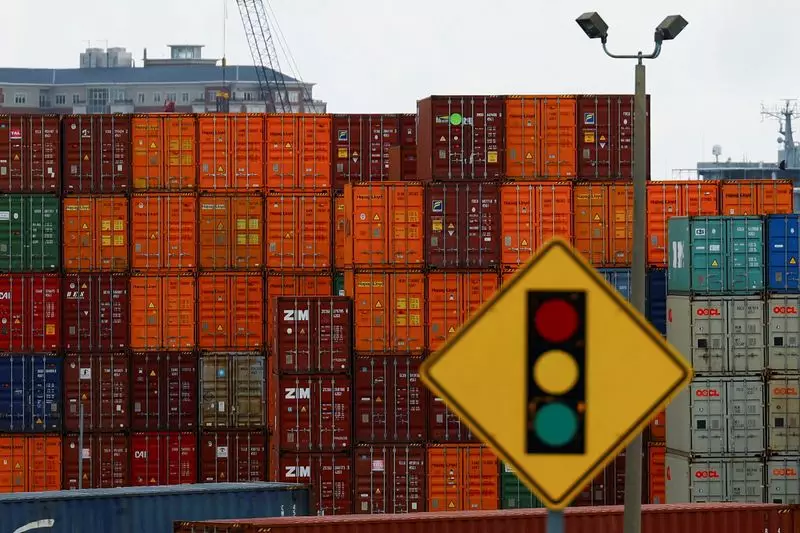The ongoing strike by the International Longshoremen’s Association (ILA) has significantly disrupted operations at major U.S. ports, marking the largest dockworker strike in nearly half a century. As of Thursday, long lines of container ships have formed off the coasts, waiting to unload vital goods. This unprecedented action, which began on a Sunday, has already caused a backlog of at least 45 container vessels at East Coast and Gulf Coast ports, a staggering increase from just three before the strike commenced. With negotiations seemingly stalled, the implications for the supply chain are profound.
Current conditions appear bleak. No negotiations have been scheduled, creating a deadlock between the union and port employers. The ILA’s demands for a substantial pay increase and job assurances regarding port automation have created a rift that the U.S. Maritime Alliance (USMX) has struggled to bridge. Employers have offered a 50% pay increase, but the ILA has deemed this insufficient. This conflict is not merely about wages, but also about the future of dockworking jobs in an increasingly automated industry. Without a resolution, the backlog is projected to exponentially increase, causing further delays and economic ramifications.
This impasse has drawn the attention of the White House, which has encouraged employers to reassess their offers. However, USMX’s adamant refusal to return to bargaining under preconditions illustrates the complexities of labor negotiations in a time of crisis.
Beyond immediate inconveniences, the strike threatens to trigger broader economic challenges. With ports critical to the distribution of essential goods—from food items such as bananas to industrial components like auto parts—the delay in unloading operations could lead to significant shortages in various sectors. Economists at Morgan Stanley have indicated that while initial consumer prices may not reflect these disruptions, prolonged delays would inevitably result in higher prices, especially for food. The implications for the grocery sector could be particularly severe, as the supply chain is already fragile after recent pandemic-related disruptions.
Compounding these issues, the National Retail Federation and 272 other trade associations have urged the Biden administration to intervene and halt the strike. They warn of “devastating consequences” for the economy should the stoppage continue. Yet, despite this pressure, the administration has refrained from using federal powers to intervene, suggesting an unwillingness to disrupt the collective bargaining process, even in the face of potential economic fallout.
As the strike persists, shipping companies face difficult choices. Some may consider rerouting ships to West Coast ports, a significant deviation that involves navigating the Panama Canal. This alternative would not only increase logistics costs but also extend delivery timelines, compounding the existing supply chain issues. Jena Santoro from Everstream Analytics noted that many shipping vessels appear reluctant to divert their routes, hoping instead for a swift resolution to the strike, which emphasizes a collective uncertainty in the industry regarding future operations.
The longer the strike extends, the more pronounced the economic implications will become, potentially altering shipping dynamics within the U.S. for the foreseeable future. Businesses that rely heavily on timely shipments are likely to feel the pinch first, with ripple effects spreading through various sectors of the economy.
The ongoing dockworker strike at major U.S. ports illustrates the delicate balance between labor rights and economic stability. As ships continue to queue outside strike-affected ports while negotiations remain stalled, the potential for widespread shortages looms large. The long-term consequences for both the labor force and the economy depend heavily on the willingness of both parties to engage in meaningful dialogue, which has so far proven elusive. With significant economic pressures building, it remains to be seen how this conflict will resolve and what legacy it will leave for the future of labor relations in American ports.

